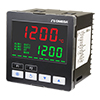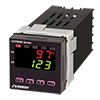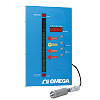Technology Overview
Proportional integral derivative (PID) control is a well established way of driving a system towards a target position or level. It’s practically ubiquitous as a means of controlling temperature, and finds application in myriad chemical and scientific processes as well as automation. PID control is however not without problems. It can yield less than ideal results in situations where the target value changes, whether as a step function or as part of a “ramp & soak” profile.
In an effort to improve performance, some instrumentation manufacturers are exploring the value of using “fuzzy logic” for process control. This OMEGA Engineering White Paper explores both the weaknesses of PID systems and the potential benefits of fuzzy logic, with particular reference to issues in temperature control. Individual sections address:
In an effort to improve performance, some instrumentation manufacturers are exploring the value of using “fuzzy logic” for process control. This OMEGA Engineering White Paper explores both the weaknesses of PID systems and the potential benefits of fuzzy logic, with particular reference to issues in temperature control. Individual sections address:
- Basics of PID control loops
- PID challenges
- Introduction to fuzzy logic for control
- PID plus adaptive fuzzy logic
- Applications
Basics of PID Control Loops

Integral action, the second term in “PID”, attempts to remedy this. It effectively cumulates the error result from the “P” action, using this to increase the correction factor. If the oven remained below temperature “I” would act to increase the heat delivered. However, rather than stop heating when the target is reached, “I” attempts to drive the cumulative error to zero, resulting in an overshoot.
The third letter, D for derivative, attempts to minimize this overshoot. It does this by slowing the correction factor applied as the target is approached.
PID Challenges
The mathematics in a PID control equation is complex with multiple variables and constants interacting. In any given application these are selected to follow the target value as closely as possible, within the constraints imposed by the process itself and the instrumentation.
Three issues common to almost every process control application are:
Three issues common to almost every process control application are:
- Time delays or lag
- Step function response
- “Ramp & Soak” function response

When the target value changes instantaneously PID forces the system to apply a large correcting factor, which again can lead to overshoot. Alternatively, the system may become saturated, unable to supply sufficient correction, adding to the impact of the “I” term.
These problems also occur in “ramp & soak” situations where temperature is increased gradually then held. Tracking a gradual change in setpoint can challenge PID control systems.
As a result, selecting the optimal values is something of a trial-and-error process known as “tuning.” Over the years many approaches to tuning have been developed, the most satisfactory of which appears to be the “Ziegler Nichols” method. However, this produces high levels of oscillation, which can be problematic in some situations.
Introduction to Fuzzy Logic for Control
Conventional computing is based on Boolean logic, meaning everything is represented as either zero or one. In some situations this leads to oversimplification and inadequate results. Fuzzy logic, and by extension, fuzzy control, seeks to deal with complexity by creating heuristics that align more closely with human perception of problems.
Fuzzy logic provides a way of dealing with imprecision and nonlinearity in complex control situations. Inputs are passed to an “inference engine” where human or experienced-based rules are applied to produce an output.
Fuzzy logic provides a way of dealing with imprecision and nonlinearity in complex control situations. Inputs are passed to an “inference engine” where human or experienced-based rules are applied to produce an output.
PID Plus Adaptive Fuzzy Logic
Tuning of PID loops depends on heuristics yet often ends up being sub-optimal. Fuzzy logic provides an alternative to approaches such as Ziegler Nichols, and a growing body of research suggests it yields superior results. Thus it would seem an ideal way to control many complex processes is with a PID controller tuned with fuzzy logic.
One commercially available product incorporating such an approach is the OMEGA® Platinum Series of temperature and process controllers. This family of compact microprocessorbased PID controllers, available in three DIN sizes, is designed to be easy to set-up and use. All common thermocouples and RTDs can be connected, with the system automatically enabling only the relevant functions for the input type selected. Voltage and current inputs are also available, allowing use with almost any engineering units. These controllers provide a complete PID solution, supporting complex programs with up to 16 Ramp & Soak sequences. Auto tune is available for PID applications with adaptive fuzzy logic to help attain optimal results.
One commercially available product incorporating such an approach is the OMEGA® Platinum Series of temperature and process controllers. This family of compact microprocessorbased PID controllers, available in three DIN sizes, is designed to be easy to set-up and use. All common thermocouples and RTDs can be connected, with the system automatically enabling only the relevant functions for the input type selected. Voltage and current inputs are also available, allowing use with almost any engineering units. These controllers provide a complete PID solution, supporting complex programs with up to 16 Ramp & Soak sequences. Auto tune is available for PID applications with adaptive fuzzy logic to help attain optimal results.
Applications
Unless open-loop control is acceptable, almost every process control application would benefit from PID control. In terms of temperature control, good examples are:
- Heat treatment of metals. “Ramp & Soak” sequences need precise control to ensure desired metallurgical properties are achieved.
- Drying/evaporating solvents from painted surfaces. Over-temperature conditions can damage substrates while low temperatures can result in product damage and poor appearance.
- Curing rubber. Precise temperature control ensures complete cure is achieved without adversely affecting material properties.
- Baking. Commercial ovens must follow tightly prescribed heating and cooling sequences to ensure the necessary reactions take place.
- Ceramics. Continuous kilns must deliver high levels of heat yet are subject to varying thermal loads. This makes them an ideal application for PID control.
In addition, many scientific and chemical processes rely on careful and accurate control of temperature.
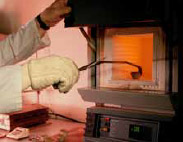
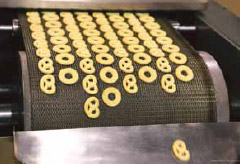
Key Takeaways
Closed-loop control attempts to keep the actual output from a process as close to the target or setpoint output as possible.
PID control is an established method of providing such control, but requires tuning for optimal performance. Such tuning is complex and difficult so heuristic techniques, such as the Ziegler Nichols method, are usually employed.
Processes requiring step change or “Ramp & Soak” control are especially difficult to handle through conventional PID techniques. To address this, controller manufacturers like OMEGA are incorporating fuzzy logic-based auto tuning capabilities. Advanced computational techniques are used to help optimize PID loops, and provide improved levels of process control.
PID control is an established method of providing such control, but requires tuning for optimal performance. Such tuning is complex and difficult so heuristic techniques, such as the Ziegler Nichols method, are usually employed.
Processes requiring step change or “Ramp & Soak” control are especially difficult to handle through conventional PID techniques. To address this, controller manufacturers like OMEGA are incorporating fuzzy logic-based auto tuning capabilities. Advanced computational techniques are used to help optimize PID loops, and provide improved levels of process control.





